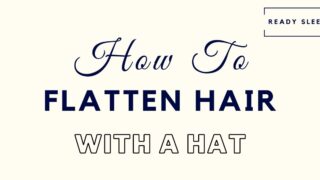It’s quite rare that two classic hairstyles with clear historical roots both have a modern resurgence at around the same time. But what’s the difference between a pompadour and a quiff?
With quiffs, the hair just above the forehead is swept upward and backward, while pompadours take things a step further. All of the hair on top is pushed up and swept backward, giving pompadours a lot more volume than quiffs. In general, pompadours are glossier, higher maintenance, and require more styling product than quiffs do.
Understanding the differences is the first step when deciding which of these goliaths of men’s hair you’ll want to select for yourself.
Certain features will be more important to some men than others.
So, which one should you go for?
Let’s get to it.
Pompadour Vs Quiff: Which One Is For You?
As always, a stepwise approach to choosing between two styles is usually the best course of action.
Take the following factors into consideration when making your decision.
1. Pompadours Are More Showy Than Quiffs
This may seem obvious, but if you definitely prefer the look of one style over the other, this decision just got a whole lot easier for you.
The differences between the two styles can be subtle and they can be difficult to distinguish from each other sometimes.
It can be hard to identify the line between a “quiff” and a “pompadour”.
In general, pompadours are bigger. All of the hair is swept backward as opposed to quiffs where it’s just the forelock (hair above the forehead) that’s swept backward.

Shutterstock
Because of this, pomps are more showy and in-your-face and will usually be the most prominent aesthetic feature above your neck.
Although some pompadours are definitely more subtle than others, in general, they’re just louder than quiffs.
Quiffs are more subtle and understated. They aren’t the first thing you notice when you see a man.

If this suits your personality better, it may be a better option for you.
2. Quiffs Are More Versatile Than Pompadours
Overall, quiffs are more versatile than pompadours.
The forelock is swept upward, but it can be straight, messy, curly, wavy, and so on.
Although pompadours do allow for some variety, in general, they’re just more precise.
This may not be an issue for you. You may not want to switch things up all that often. When styling a pompadour, you’ll also know what to expect each and every time.
Plus, much like quiffs, pompadours can also be styled with an undercut.
This creates a completely different aesthetic and is an interesting way to change things up while still keeping the pompadour.
But ultimately, a quiff will be much easier to change up.

With pompadours, it can be difficult to achieve the look you want in the first place. Once you’ve got one you like, you’ll have a tendency to stick with it and might be reluctant to experiment.
3. Pompadours Require More Maintenance Than Quiffs
Most people would agree that pompadours are harder to maintain than quiffs.
Although it seems straightforward in principle, a pompadour does require quite a bit of effort to get right.
This is especially the case when you’re just starting out with them.
A blow dryer is essential when crafting a pomp. The use of heat (at the right level) is so important for keeping the hair in place.
But it doesn’t just stop there.
You’ll most likely need to apply some pre-styling mousse to protect the hair from the heat beforehand. It’ll also give it a nice full and voluminous appearance.
It’ll generally take longer to style while blow drying it, whether you’re using a round brush, a comb, or just your fingers.
This may take some trial and error before you’ll settle on a style you’re happy with.
Pompadours are generally more precise. A lot of men want that glossy, meticulous finish.
In contrast, quiffs give you a little more scope for error. Flyaways and stubborn tufts don’t usually stick out as much and can quite easily blend in as part of the style.
“Messy quiffs” are more common than “messy pompadours”.
Don’t get me wrong – the quiff isn’t exactly smooth sailing. Of course, it depends on the specific variation you’re going for. Classic quiffs are easier to style than Rockabilly quiffs, for instance.
You’ll also most likely need to blow dry it into place in order to get the volume and texture you need.
But you’ll probably find that you’re able to achieve the quiff you want quicker than you would with a pompadour.
4. Pompadours Require More Styling Product Than Quiffs
This leads on quite nicely from the last point. Pompadours will require more styling product to achieve than your everyday quiff.
Exactly which products are needed does vary from one person to another. Some may find they need much less – for example, men with naturally full, voluminous, and textured hair.
Others may find they need much more.
Overall, most men will likely find that they need some pre-styling mousse before they blow-dry at the very least.
You’ll want to comb a layer through before applying that heat. It’ll definitely enhance the outcome while also protecting your hair.
In addition, you’ll almost certainly need styling pomade and potentially even some hairspray to keep it in place.
Although the same products may be necessary when styling a quiff, you’ll find that you need less of them or none at all.

DepositPhotos
You may need more product than you’d use when styling a crop top, for example. But it’ll definitely require less than a pomp would.
This saves time because you spend less of it applying stuff to your hair. It also saves money, because you spend less of it on products.
But it also keeps your hair happy. Although styling products these days do their best to be gentle, overall, I’m sure most people would agree that the less you have to use the better.
So, if you’d rather go for a style that requires less product, the quiff may be a better option for you.
Pompadours And Quiffs – Who Shouldn’t Choose Either?
Here’s something you may not have considered. There’s always a possibility that neither of these styles is actually a good fit for you.
The main factor to consider here is the face shape.
If your face is round, or one of the “shorter” face shapes like square, there’s a great chance these styles will work for you.
This is because they both add length.
Both quiffs and pompadours elongate the face by adding some height at the top. It’s ideal for making a round face look less round and more oval-shaped overall.
It can also be used to add some angles to a face that lacks angles and has a lot of curves.
But there are men who have the opposite problem. In other words, have faces that are traditionally considered “longer” shapes.
These include oblong, rectangular, and diamond shapes.
Here, there’s a danger that tall hairstyles such as quiffs and pompadours would only lead to further elongating the face.
This can lead to an imbalance and a disproportionate shape.
If you fall into this category, an alternative hairstyle may be a better option. You’ll want a shorter, flatter hairstyle such as a crop top or a crew cut.
You may also want more fullness at the sides and back to round out your features a little.
Face shape is important for many different reasons, from choosing your beard style to choosing your sunglasses.
Hairstyles are no different; it’s crucially important and you should take it into consideration whenever possible.
Conclusion
It’s pretty clear that the two styles are here to stay for quite some time.
Seeing them crop up so often can make it tempting to jump into one or the other without giving it much thought.
But it’s important to consider the pros and cons of each, as well as features such as your individual face shape before coming to a decision.
Hopefully, this article has made it much easier for you to do so.
Ready Sleek founder. Obsessed with casual style and the minimalist approach to building a highly functional wardrobe. Also a fan of classic, vintage hairstyles.







